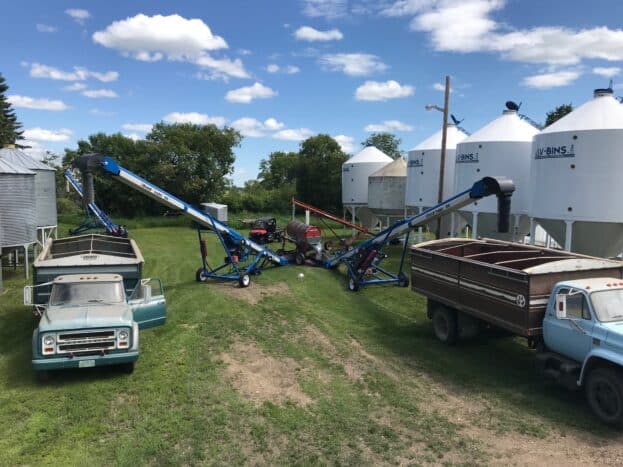All industries have seen major production advancements over the years. Whether it’s utilizing new technologies or developing new operating strategies with the goal to improve production or reduce operating costs, the intent is always to increase net income.
Today, many of these strategies are technology-based. Variable rate application, GPS guidance, genomics technology and drones are some of the current drivers of change. That said, there is a trend to go back to some older agronomy methods, in particular cover cropping and intercropping.
Cover cropping and intercropping go back centuries. They began to disappear at the turn of the 20th century with the advent of synthetic fertilizer. It was easier to use synthetic fertilizer, but soil degradation was the result.
Now, with increased publicity about cover cropping, people are curious about future potential in this area. Elaine Ingham, an American microbiologist and soil biology researcher who co-authored the USDA’s Soil Biology Primer, suggests we have up to 1,500 years of nutrition in our soils.
That is, if we just took from the soil without adding any nutrients and were able to take all the plant needed, most soils will be able to supply plant growth for 1,500 years. By using mulches, animal manure and compost we will be able to extend that dramatically. The way these nutrients are made available is through natural weathering of the soil and microbial activity.
When we have a nutrient deficiency, we normally have a microbial deficiency, assuming the soil hasn’t eroded and it’s not a mobile nutrient like nitrogen. Using strategies that involve composting — a common benefit of cover crops and intercropping — could be a good way of replacing nutrient removal beyond the soil supply capability.

Jay Fuhrer, a United States Department of Agriculture conservationist in North Dakota, notes plants literally create soil by fixing dirt, which leads to an active functioning ecosystem. By utilizing cover crops and practicing soil health principles we can build soil health. Healthy soils will supply most if not all the nutrients the plants need.
Cover crops are going to play a large role in future agriculture management. It’ll be the exception, rather than the rule, to see a field without a green cover crop growing. This may require some genetic tweaking on behalf of humans for difficult situations and climates (like breeding heat- and drought-tolerant cover crops), but many current cover crops are suitable for this and widely available on the market as seed.
Still, breeding new generations of cover crops will become an even bigger industry. Species will be developed either as plant selections or ecovars that’ll be included in blends as new species for cover crop uses. These will come more from the perennial forb plant group. This group today is an under-represented group of plants that we use in our cropping systems, yet they play a large role in soil health and adding plant diversity.
Drones will be utilized to apply seed. These drones will be able to test the soil monitoring fungal: bacterial ratios, soil nitrates, soil moisture, and photosynthetic rates to be able to seed a multi-species cover crop with species that are required at each spot within the field. This process will be repeated throughout the year.
Seed coatings will have their place. Seed coatings will allow seed to be placed in the soil with delayed germination. This will allow a one-pass seeding of cash crop and cover crop but allowing the cash crop to get a head start.
There’s a spot for genetic manipulation in the system. Having the option to turn genes on and off has potential of helping cover crop plants grow, but keeping them in the vegetative stage, not allowing them to go to their reproductive stage. This would keep the root exudates in a form that continues to feed the soil biology.
Feedlots will be a thing of the past. Meat animals will be on the land in conjunction with cropping systems. They will still be managed with soil health and animal gains as targets, another tool of building soil health.
Agriculture, like other industries, is looking and will look very different in the future. Rome was not built overnight. Neither will the changes that are on the horizon for cover cropping.
Header photo — Strip cropping and fall grazing. Photo: Kevin Elmy
Related Articles
Looking Closely at the Perks of Using Cover Crops








